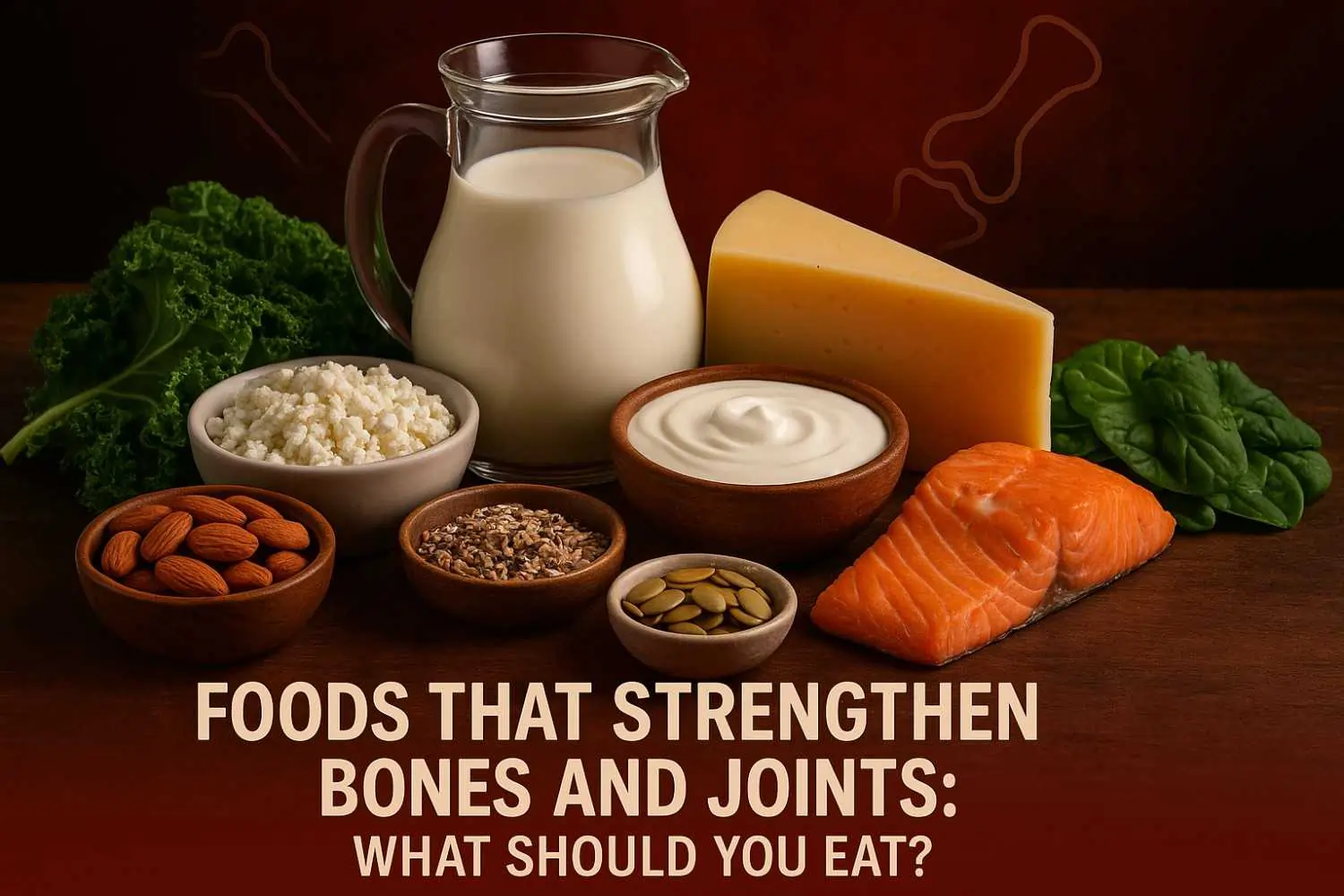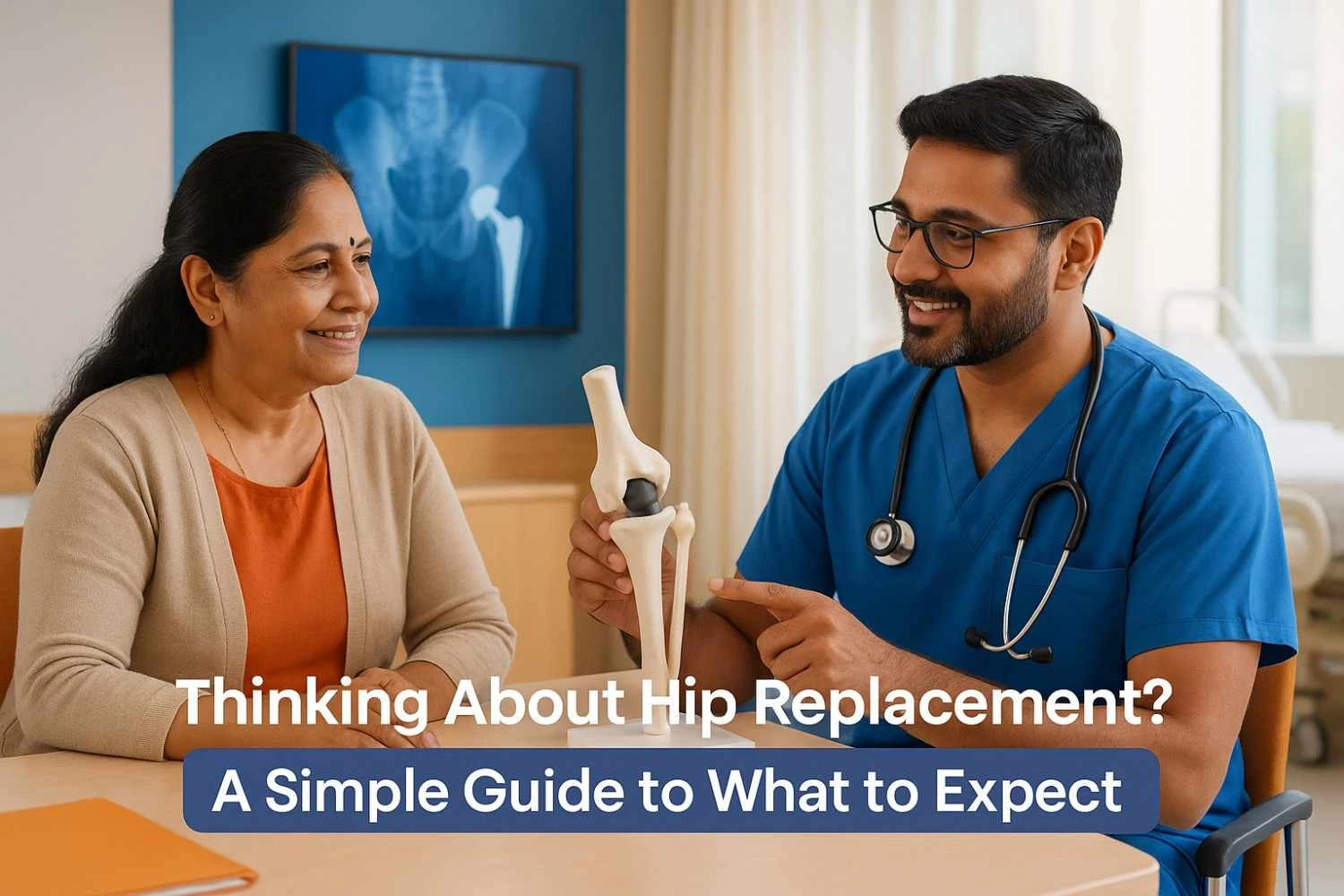As we journey through life, our ability to move freely—to walk, run, bend, and lift—is something we often take for granted. This freedom is built on the foundation of a strong musculoskeletal system: our bones and joints. But this foundation isn't static; it's a living, dynamic part of our body that requires constant care and nourishment. What you put on your plate every day plays a far more significant role in your long-term mobility than you might think.
At Germanten Hospitals, recognised as a leading orthopedic hospital in Hyderabad, we believe in a holistic approach to health. While we are equipped with German-inspired precision and advanced robotic technology for complex procedures, our primary goal is to empower our patients with the knowledge to lead healthier lives. Prevention and proactive care are the cornerstones of lifelong wellness.
This comprehensive guide is an extension of that commitment. We will explore the powerful connection between nutrition and your bones and joints, helping you understand what to eat to build a stronger, more resilient body for years to come.
Understanding the Basics: What Are Your Bones and Joints Made Of?
Before we dive into the specifics of a bone-healthy diet, it’s important to understand the very structures we’re trying to nourish. Your skeleton is not just a lifeless frame; it’s a complex and active organ system.
The Living Framework: More Than Just a Skeleton
Think of your bones as a bustling city, constantly under construction. This process, called remodelling, involves specialised cells that break down old, worn-out bone tissue while others build new, strong tissue to replace it. This ensures your skeleton remains robust and can repair itself.
Throughout your youth, you build more bone than you lose, accumulating what is known as "Peak Bone Mass," which you typically reach by age 30. Consider this your "bone bank account." The more you deposit early in life, the more you have to draw upon as you age, when bone loss naturally begins to accelerate. A nutrient-rich diet is your primary tool for maximising this account.
The Connectors: How Joints and Cartilage Keep You Moving
Joints are the remarkable connections that allow for movement. The ends of your bones are capped with a smooth, tough tissue called cartilage, which acts as a cushion to prevent them from rubbing against each other. This entire mechanism is lubricated by synovial fluid, ensuring everything moves smoothly.
One of the greatest threats to this system is chronic inflammation. Inflammation can degrade cartilage, leading to the pain, stiffness, and reduced mobility that many people experience as they get older.
Common Culprits: Osteoporosis vs. Osteoarthritis
Two conditions that significantly impact mobility are osteoporosis and osteoarthritis.
- Osteoporosis: This is a disease of the bones. It occurs when the body loses too much bone, makes too little bone, or both. As a result, bones become weak and may break from a fall or, in serious cases, from minor bumps.
- Osteoarthritis: This is a degenerative joint disease and the most common form of arthritis. It involves the breakdown of cartilage, causing the bones within the joint to rub together, leading to pain and stiffness.
A well-planned diet can provide your body with the tools it needs to help prevent and manage both of these conditions.
The Pillars of Bone Strength: Essential Nutrients You Can't Ignore
Building and maintaining strong bones requires a team of essential nutrients that work together. Focusing on just one, like calcium, without its supporting cast is like trying to build a house with only bricks and no mortar.
Calcium: The Master Building Block
Calcium is the most abundant mineral in your body, with about 99% of it stored in your bones and teeth, giving them their structure and hardness. Your body cannot produce its own calcium, so it must come entirely from your diet. If you don't consume enough to support other bodily functions (like muscle contraction and nerve signalling), your body will take the calcium it needs from your bones. Over time, this withdrawal weakens the skeletal structure.
Top Food Sources for Calcium:
- Dairy Products: Milk, yogurt, and cheese are excellent and easily absorbed sources.
- Green Leafy Vegetables: Include broccoli, kale, cabbage, and okra in your diet.
- Fish: Canned sardines and salmon, especially when you eat the soft, edible bones, are great choices.
- Fortified Foods: Many plant-based milks (soya, almond), tofu, and breakfast cereals have calcium added to them.
Vitamin D: The Key That Unlocks Calcium
Calcium can't do its job alone. It needs Vitamin D to be properly absorbed from your gut into your bloodstream. Without enough Vitamin D, even a calcium-rich diet won't benefit your bones.
How to Get Vitamin D:
- Sunlight: Your body naturally produces Vitamin D when your skin is exposed to sunlight. For many people, just 10 to 30 minutes of direct sun exposure on the arms and legs a few times a week is enough.
- Food Sources: It's found in only a few foods naturally. The best sources are fatty fish like salmon, mackerel, and sardines, as well as egg yolks. Many foods like milk and cereals are also fortified with Vitamin D.
The Supporting Cast: Magnesium, Vitamin K, and Protein
- Magnesium: This mineral is crucial for converting Vitamin D into its active form and helps guide calcium to the bones. You can find it in nuts (almonds, walnuts), seeds (chia, pumpkin), leafy greens, and avocados.
- Vitamin K: This vitamin activates proteins that are essential for bone formation and mineralisation, helping to bind calcium into the bone matrix. It is abundant in green leafy vegetables like kale, spinach, and broccoli.
- Protein: About half of your bone structure is made of protein. It creates the collagen framework that minerals then fill in. Good sources include lean meats, poultry, fish, beans, lentils, and dairy.
Eating for Flexible Joints: How to Fight Inflammation and Protect Cartilage
While bones provide the structure, it's your joints that allow for fluid movement. The focus of a joint-friendly diet is to reduce inflammation and provide the building blocks for healthy cartilage.
Omega-3 Fatty Acids: Your Natural Anti-Inflammatory
Chronic inflammation is a major contributor to joint pain and damage. Omega-3 fatty acids are powerful natural compounds that help reduce the body's production of inflammatory chemicals. Studies have shown that a regular intake of omega-3s can help reduce joint swelling and stiffness.
Where to Find Omega-3s:
- Fatty Fish: Salmon, mackerel, sardines, and tuna are the best sources. Aim for at least two servings per week.
- Plant-Based Sources: Walnuts, flaxseeds, and chia seeds are also excellent options.
The Antioxidant Army: Vitamins C, E, and Polyphenols
Your joints can suffer from "oxidative stress," a process caused by unstable molecules that damage tissues. Antioxidants are like a defence force that neutralises these harmful molecules.
- Vitamin C: This is a powerful antioxidant that is also essential for producing collagen, the main protein that makes up your cartilage. Load up on citrus fruits, bell peppers, strawberries, and broccoli.
- Polyphenols and Anthocyanins: These compounds, found in colourful fruits and vegetables, have strong anti-inflammatory effects. Berries, cherries, and green tea are particularly rich sources.
Spices with Superpowers: Turmeric and Ginger
For centuries, traditional medicine has used certain spices to combat pain and inflammation.
- Turmeric: This bright yellow spice contains curcumin, a potent anti-inflammatory compound that can improve joint comfort. Tip: Consuming it with black pepper and a healthy fat like olive oil can significantly boost its absorption.
- Ginger: The active compounds in ginger, called gingerols, also have powerful anti-inflammatory and antioxidant properties that can help soothe aching joints.
Dietary Villains: Foods That Can Weaken Your Bones and Joints
Just as some foods build you up, others can actively tear you down. Being mindful of what to limit is just as important as knowing what to eat.
The Silent Saboteur: How Excess Sugar Harms Your Skeleton
While a sweet treat is enjoyable now and then, a diet high in added sugars can be devastating for your musculoskeletal health. Excessive sugar intake triggers the release of inflammatory messengers, which can worsen arthritis symptoms. Furthermore, sugar can increase the amount of calcium your body excretes through urine and can damage the collagen in your bones, making them more brittle. Be wary of hidden sugars in sodas, juices, sauces, and many processed foods.
The Salty Truth: Why Processed Foods Are a Problem
Eating too much salt (sodium) can cause your body to lose calcium through urination, which may lead to bone loss over time. The biggest culprit isn't the salt shaker on your table; it's the massive amounts of sodium hidden in processed, packaged, and fast foods. By focusing on a diet of fresh, whole foods, you will naturally lower your sodium intake.
Unhealthy Fats and Inflammation: A Vicious Cycle
The type of fat you eat can either calm or fuel inflammation.
- Saturated and Trans Fats: Found in red meat, full-fat dairy, fried foods, and many commercial baked goods, these fats can trigger an inflammatory response in the body.
- Omega-6 Imbalance: While some omega-6 fatty acids are essential, the typical modern diet contains far too many of them relative to anti-inflammatory omega-3s. This imbalance, often from corn and soybean oils used in processed foods, can promote a pro-inflammatory state.
Why Your 'Healthy' Spinach Salad Isn't Your Best Calcium Source
This may come as a surprise, but some healthy foods contain compounds that can interfere with nutrient absorption. Spinach, for example, is high in substances called oxalates, which can bind to calcium and prevent your body from absorbing it effectively. Similarly, beans and whole wheat bran contain phytates that can have a similar effect. This doesn't mean you should avoid these foods—they are packed with other vital nutrients! It simply means you shouldn't rely on them as your primary source of calcium.
Putting It All Together: A Practical Guide to Bone-Healthy Eating
Adopting a new way of eating can feel overwhelming. The key is to focus on a sustainable dietary pattern rather than individual "superfoods."
The Mediterranean Diet: The Gold Standard for Bone and Joint Health
The Mediterranean diet is consistently ranked as one of the healthiest eating patterns in the world. It emphasizes fruits, vegetables, whole grains, legumes, nuts, and healthy fats like olive oil, with moderate fish and poultry and limited red meat.
This diet is a powerhouse for musculoskeletal health. It is naturally anti-inflammatory due to its high content of omega-3s and antioxidants. Studies have linked adherence to the Mediterranean diet with a lower risk of hip fractures and significant improvements in arthritis symptoms.
A Sample Meal Plan for a Stronger You
Here’s what a day of bone- and joint-friendly eating could look like:
- Breakfast: A bowl of plain oatmeal made with milk, topped with fresh berries, walnuts, and a sprinkle of chia seeds.
- Lunch: A large salad with mixed greens, chickpeas, cucumber, tomatoes, and grilled chicken, dressed with olive oil and lemon juice.
- Dinner: Baked salmon seasoned with turmeric and ginger, served with a side of roasted broccoli and quinoa.
- Snack: A bowl of Greek yogurt or a handful of almonds.
The Power of Movement: Why Diet Isn't Enough
Nutrition and exercise are partners. A healthy diet provides the building blocks, but exercise provides the stimulus that tells your bones to get stronger.
- Weight-Bearing Exercises: Activities like brisk walking, stair climbing, and dancing force your bones to work against gravity, signalling them to increase their density.
- Strength Training: Lifting weights or using resistance bands builds muscle, and when muscles pull on bones, it stimulates bone growth. Strong muscles also support and protect your joints.
When to Seek Professional Advice: Your Next Steps
A healthy diet is a powerful tool, but it is not a substitute for professional medical care. If you are experiencing persistent joint pain, have a family history of osteoporosis, or are concerned about your bone health, it is crucial to seek an orthopaedic consultation in Hyderabad.
At Germanten Hospitals, our experts can provide a comprehensive evaluation, including bone density testing, and create a personalised plan that may include lifestyle counselling, physical therapy, or advanced medical treatments. If you're searching for the best orthopedic doctor in Attapur or the best orthopedic hospital Hyderabad has to offer, our dedicated team is here to provide world-class care.
Don't just search for an "orthopedic clinic near me Hyderabad"; choose the expertise and precision that your health deserves. A consultation with an expert orthopedic surgeon in Hyderabad can provide you with clarity and a roadmap to better musculoskeletal health.
Take the first step towards a more active, pain-free life. Book your appointment with the specialists at Germanten Hospitals today.




